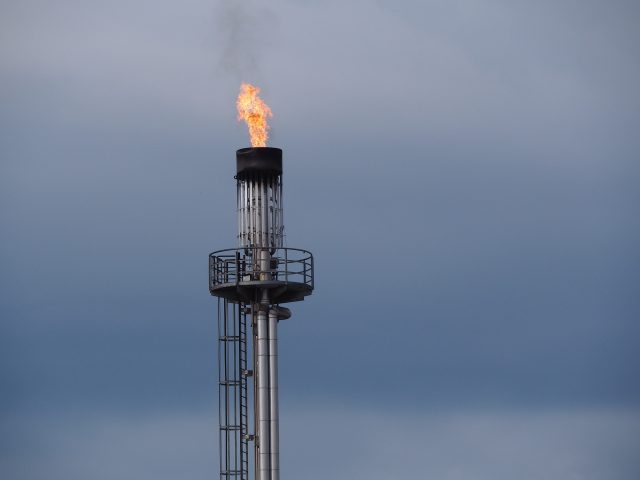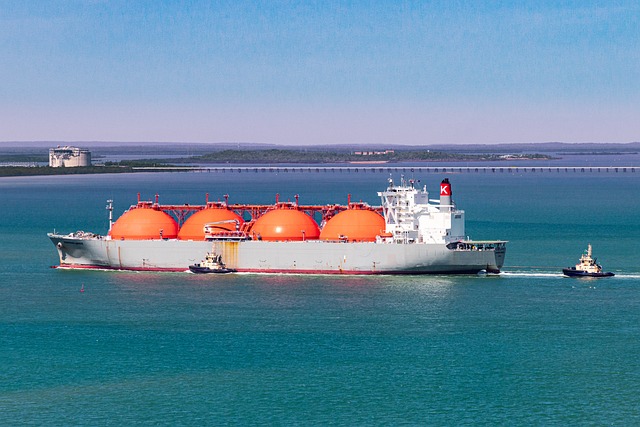
The Russian invasion of Ukraine, followed by Kremlin sanctions that included Russian gas exports, has led to major changes in the European Union’s gas trade since 2022. The move away from Russian pipeline gas has led to a near doubling of liquefied natural gas – LNG – imports into the EU market in 2022 compared to the previous year, and a record 120 billion cubic metres in 2023. With the EU diversifying its suppliers to secure its gas needs, the main LNG trading partner has become the US, whose exports to the European market have tripled. By 2022, the EU imports LNG from the US, Qatar and Russia.
US LNG imports are twice as high as those from Qatar
According to official data, imports from the US ended up being twice as high as those from the second source, Qatar. And with the strengthening of its position in the European market, and with Qatar’s exports declining in the context of the Middle East crisis, the US has dethroned the country from the top of the LNG export rankings. On the other hand, despite its much-discussed independence from Russian gas, the EU has not given up on it altogether, just swapped pipeline gas for LNG, which is currently not subject to sanctions. And much of it does not stay in importing countries. According to official data, Russian LNG transits out of mainland Europe via terminals in several EU ports.
Energy ministers from EU bloc countries decided on 4 March, on a proposal from the European Commission, to extend voluntary gas curbs for another year. At the same meeting, the consequences of stopping the transit of Russian gas through Ukraine were also discussed, with EU Energy Commissioner Kadri Simson announcing that the EU is not interested in extending the contract and will prepare the legal framework for stopping deliveries without penalties for buyers in April. The contract between Naftogaz Ukraine and Russia’s Gazprom expires at the end of this year, and the Ukrainians have announced since last year that they have no intention of extending it, stressing that gas deliveries have continued despite the war only “to support our European colleagues” so as not to create a gas price crisis.

After the meeting in Brussels, Kadri Simson gave assurances that reserves in underground gas storage before the end of the current cold season are at a fairly high level, which will make it easier to pump for next winter. Kadri Simson also pointed out that suppliers and routes for gas supplies have diversified – which obviously has a cost – but the EU’s dependence on Russian gas has decreased substantially. Beyond the additional costs of supply diversification, the voluntary reduction in consumption has meant an 18% reduction in demand between August 2022 and December 2023. This decrease also raises alarm signals about the de-industrialisation of the region. In addition, European authorities are considering a ban on gas-fired power plants for heating, a measure for which many EU countries are not yet ready.
On the other hand, being voluntary, not all Member States in the EU bloc are willing to implement the recommendation to reduce gas consumption. This is also the case in Romania, with Energy Minister Sebastian Burduja announcing that the authorities in Bucharest expect not a decrease but an increase in gas consumption in the coming period, amid plans to revive the chemical fertiliser industry and by extending gas distribution networks to the population. Burduja explained that other EU countries need to reduce their dependence on Russian gas, not Romania, which is counting on covering the extra consumption by starting to exploit gas from the Black Sea continental shelf from 2027, which will make Romania “the first gas producer in the EU”.
To what extent the EU has succeeded in reducing its dependence on Russian gas is debatable. Based on a report by the anti-corruption group Global Witness, the EU is still far from its much-vaunted independence. According to the report, Russian LNG exports to EU countries increased by 40% in 2023 compared to the previous year. According to the source cited, half of Russian LNG exports went to European countries.
Who are the main European buyers of Russian liquefied gas?
The main buyers in the European Union are Spain and Belgium, followed by France, with these three countries importing a total of 44% of Russian liquefied gas. The rest, up to 50%, goes to other EU countries. And according to High North News, that’s almost half the EU bloc’s countries in total. According to High North News, the EU still imports $1 billion worth of LNG a month from Russia. And that’s because LNG, unlike Russian pipeline gas, is not subject to sanctions. However, Russian liquefied gas does not stay entirely in the main European importing countries – Spain and Belgium – and is exported further afield. The source explained that the EU facilitates Russian exports outside the continent through its terminals. More than 200 shipments/year from Russia’s Yamal LNG facility pass through EU ports, and with the recently launched Arctic LNG 2 project in 2024 these imports will increase further from this year.
According to official Belgian government data quoted by The Guardian, the main buyer of Russian liquefied gas passing through the HUB in the Belgian port of Zeebrugge is China, with a fifth of their total volume. According to the same data, only 2.8% of the gas consumed by Belgians would come from Russia. Until the outbreak of war in Ukraine, 70% of the EU’s LNG imports came from three countries: the US, Qatar and Russia. From 2022 onwards, with the EU’s moves to reduce dependence on Russia and diversify gas suppliers, as well as a shift towards imports from “reliable partners“, US LNG imports to Europe – the EU and the UK – have exploded.
In 2023, the US – which has been the world’s largest gas producer since 2011 – has also managed to dethrone the world’s leading LNG exporters, Qatar and Australia. Massive exports to other countries were only possible after the commissioning of the first major export terminal on the Gulf Coast of Alaska in 2016. Initially, Asian countries – mainly Japan and South Korea – were the main buyers of US LNG. But as demand from the European market increased, US exports to the Asian market also declined. In 2023, US LNG exports increased 12.4% to a record 4.34 trillion cubic feet. And most of that – 62% – went to Europe.
For the second year, Europe was the leading buyer of US liquefied gas, with imports reaching a record 2.79 trillion cubic feet in 2023. Under these circumstances, the moratorium adopted by President Joe Biden, temporarily halting construction of new LNG terminals, could have repercussions including on exports to Europe. The current White House leader – who has pushed a massive energy transition funding plan during his time in office – has cited the “existential threat” of climate change as justification for the measure. There are currently seven LNG export terminals operating in the US, handling more than 300 million cubic feet of gas a day, according to the US Energy Information Agency.
Liquefied natural gas (LNG) is a form of natural gas that has been converted to a liquefied state to facilitate its storage and transportation. The process of liquefying natural gas involves cooling it to extremely low temperatures, usually around -162 degrees Celsius. By cooling, natural gas reduces its volume significantly, becoming a dense liquid that is easy to transport. This process reduces the volume of gas by about 600 times, making it possible to transport it efficiently over long distances and store it under controlled conditions. LNG is widely used in the energy industry to fuel power plants, as well as in the chemical industry and shipping. The use of LNG has advantages in terms of easier handling, storage and transport compared to natural gas in gaseous form. LNG can also provide a cleaner source of energy because its combustion produces fewer greenhouse gas emissions and other pollutants compared to other traditional fossil fuel sources.



 Subscribe
Subscribe